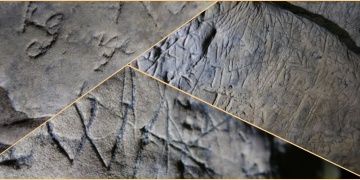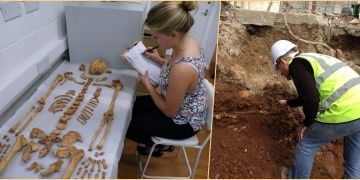
African Origins for New Zealand's mysterious bird Adzebill
The ancestor of New Zealand’s most mysterious giant bird – the extinct adzebill – likely flew here from Madagascar, Africa, new research has revealed.








The ancestor of New Zealand’s most mysterious giant bird – the extinct adzebill – likely flew here from Madagascar, Africa, new research has revealed.
Scientists have discovered that both foxes and dogs were domesticated. Also Scientists say; large dogs used for transporting loads.
Protection marks are most commonly found in medieval churches and houses, near the entrance points, particularly doorways, windows and fireplaces.
Facial recognition for coins: The novel scanner O.S.C.A.R., short for Optical System for Coin Analysis and Recognition, not only scans coins' visual features but also the minutest signs of wear such as scratching, clipping, contours, edges, pitting…
In 2014, during construction work at the ex-Civil Hospital in Gibraltar, excavations led by the Gibraltar Museum revealed a major, previously unknown burial ground containing more than 200 skeletons.
The Kondaveedu fort was a well-fortified city and was the capital during the reign of Reddy kings and later used by the French and the British as a garrison.
Assistant Secretary-General of the United Nations Mirjana Spoljaric Egger, UN's Egger invites tourists throughout the world to Turkey's unique Göbeklitepe.
Researchers used a deep learning algorithm to identify a new human ancestor. Newly identified extinct hominid likely went on to breed with modern human
Archaeolog Dr. Lee Clare says; As mentioned previously, our scientific research is currently in what I would refer to as a “transitional phase”. Freed of its old paradigm, I believe that we will see Göbeklitepe in a completely different light.
Archeologists have found remains belonging to a male baby born 5,700 years ago in an excavation in Argentina's Mendoza city.
Remarkable finds underline the importance of the ancient city, which could even be Kummanni, known as a place of worship.
BGSU ve Türkiye Cumhuriyeti Kültür ve Turizm Bakanlığı Kültür Mirası ve Müzeler Genel Müdürlüğü, geçtiğimiz Mayıs ayında mozaiklerin iadesi için anlaşma sağladı.
A sarcophagus belonging to the Late Roman period was found after a flood in what is today Turkey's Bodrum district of Muğla.
Anthropologist Nalan Damla Yılmaz Usta, who carries out the excavations, said that the skeletons were found in a depth of 400-800 metres and dated back 5,000-7,000 years ago.
Searching through an ancient villa in northwestern Turkey, Turkish archaeologists have uncovered an inscription dating back some 2,200 years.
Limnai ancient city was discovered after 3 years of research in Turkey's Canakkale














